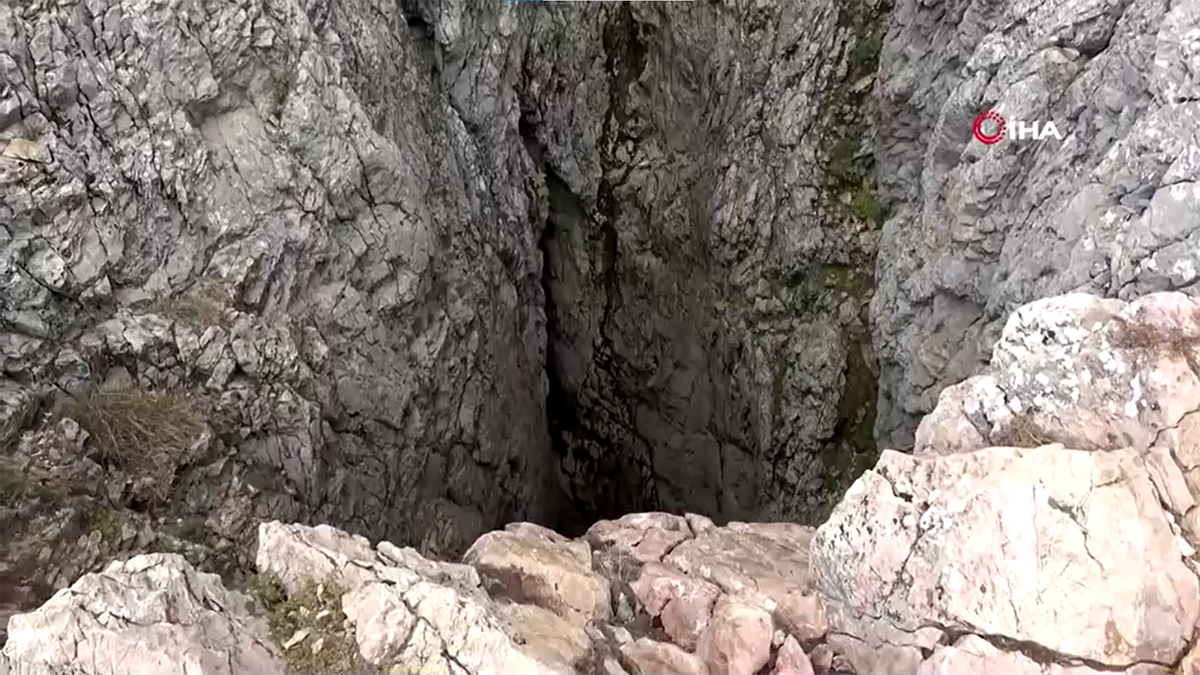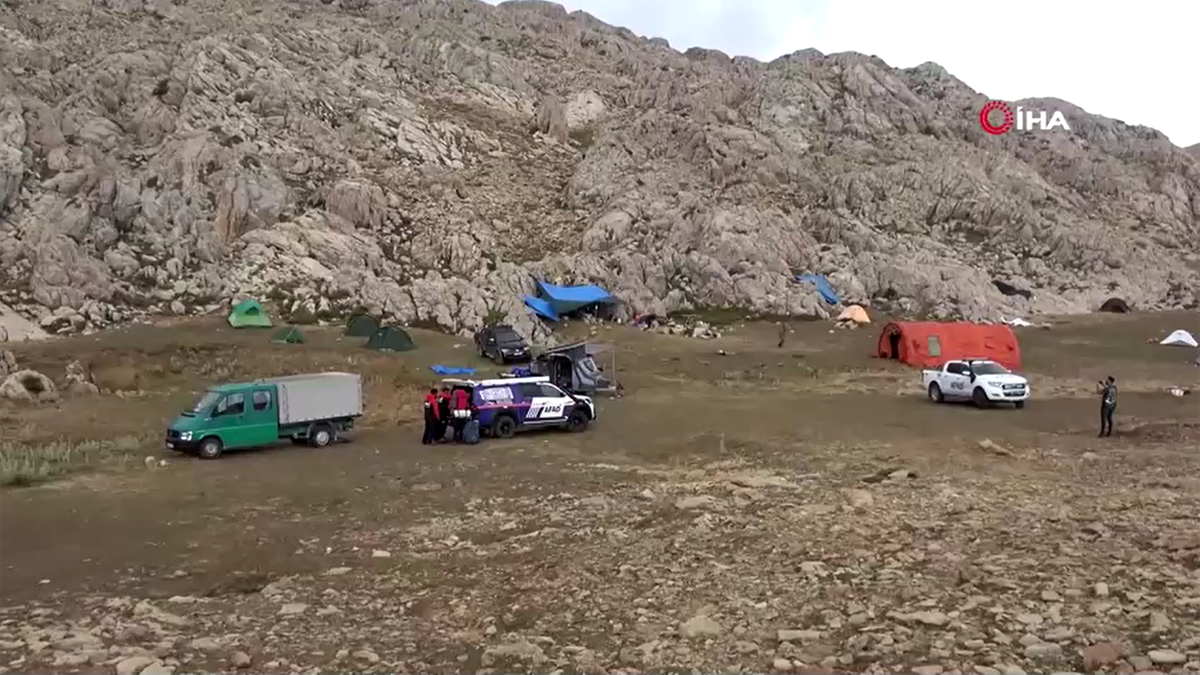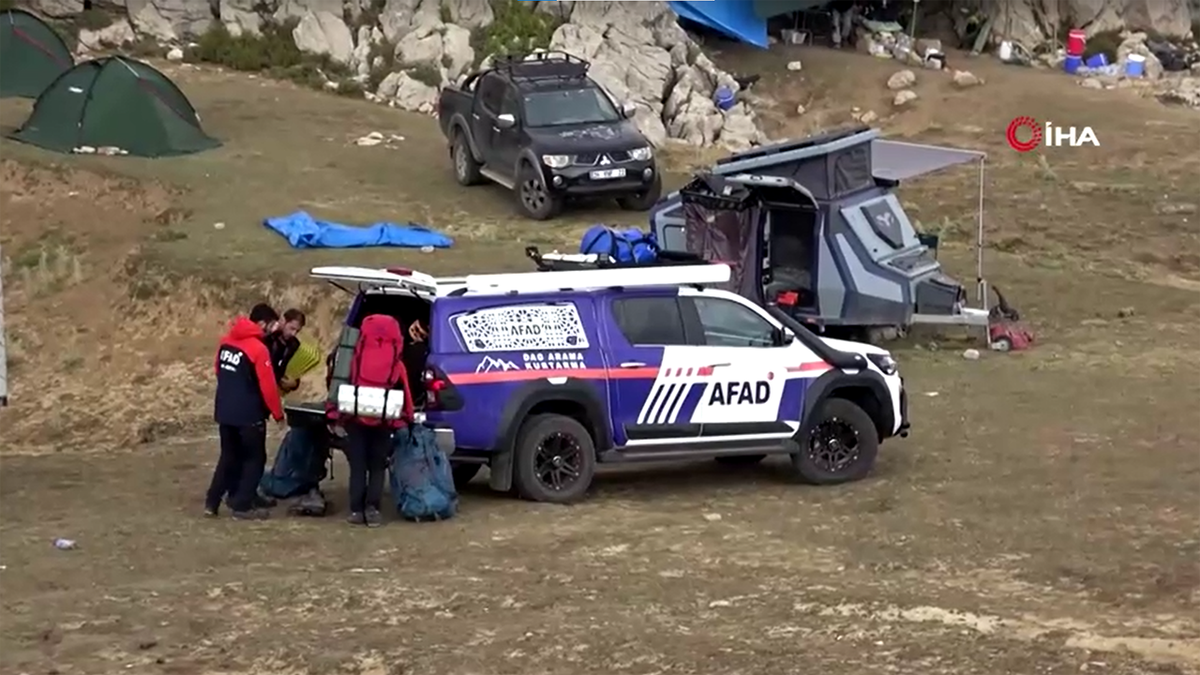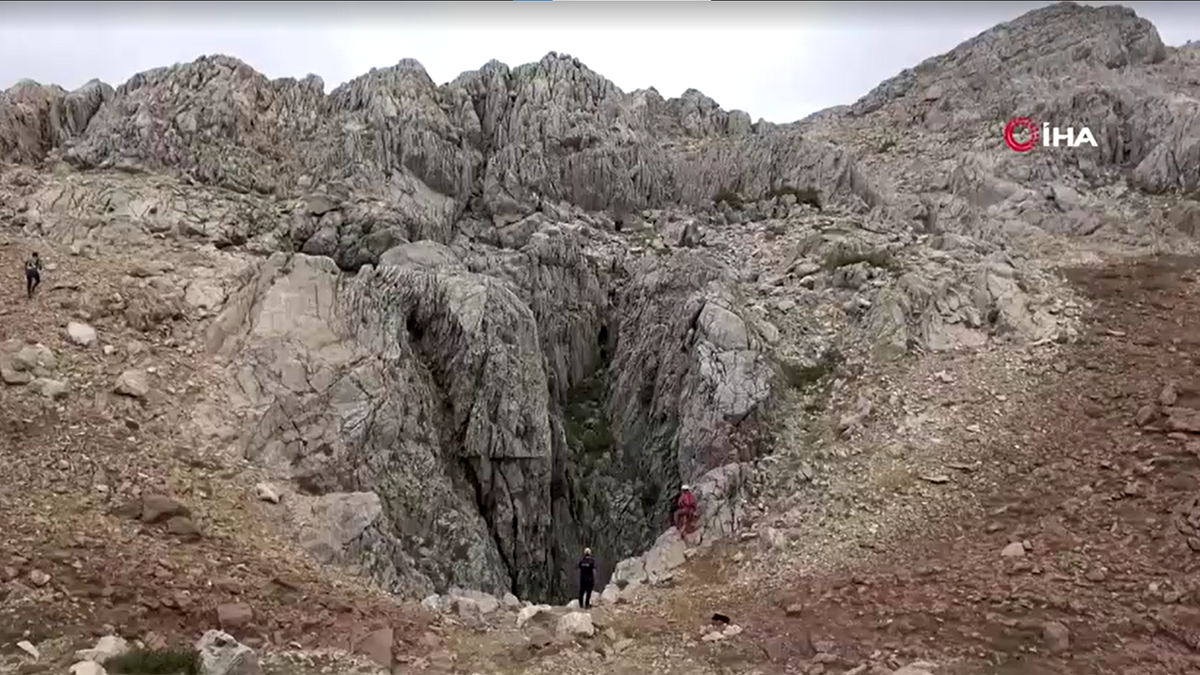Turkey cave rescue effort underway to evacuate American explorer
Officials in Turkey were seen Sept. 6, 2023, assisting with the rescue of American explorer Mark Dickey, who fell ill while 3,400 feet from the entrance of a massive cave. (IHA via Reuters)
A massive rescue effort is underway in Turkey as an American speleologist remains trapped more than 3,200 feet inside a cave.
Mark Dickey, 40, became sick and began suffering from gastrointestinal bleeding during an expedition in the Morca cave in southern Turkey’s Taurus Mountains, according to the European Cave Rescue Association. He was last known to be approximately 3,400 feet inside the cave. The Morca cave is Turkey's third deepest.
He has been unable to leave the cave on his own since Thursday, according to the New Jersey Initial Response Team, a local group of volunteers specializing in cave and mine rescue. More than 150 Turkish and international cave rescue experts are leading the effort to save him. Rescue personnel include teams from Italy, Hungary, Croatia, Bulgaria and Poland.
Dickey, who is the secretary of the association's medical committee, is described on its website as "a highly trained caver and a cave rescuer himself" who has participated in many international expeditions. He is also an instructor at National Cave Rescue Commission (NCRC), according to his social media.
PREHISTORIC CAVE BELIEVED TO BE 10 MILLION YEARS OLD FOUND IN TEXAS

Mark Dickey, a 40-year-old U.S. cave expert, is trapped more than 3,200 feet inside the Morca cave, one of Turkey's deepest caves. (Video from Turkey's IHA news agency via Reuters)
Dickey's expedition included mapping the Morca cave system for the Anatolian Speleology Group Association (ASPEG).
The New Jersey Initial Response Team provided an update on Dickey, who they described as an "extremely capable and experienced caver" in a statement Wednesday.
"Thursday, August 31, Mark was assisting in the exploration of the Morca cave (pronounced Morja) when he suddenly became ill with intestinal problems that rapidly progressed into life-threatening bleeding and vomiting," the group said. "He was unable to get out under his own power and only the most experienced of cavers are capable of reaching him to render aid. The Morca cave is very deep, wet and cold and experienced cavers who know the cave take eight hours to reach the location where Mark lies. The phone lines in the cave have become inoperable, so that communication between the surface and Mark’s location is extremely slow."

Mark Dickey, the U.S. caver who is currently trapped near Morca, poses in Mentone, Alabama, May 12, 2023. (National Cave Rescue Commission (NCRC)/Handout via REUTERS)
The statement continued: "Mark’s condition continued to deteriorate as the bleeding continued. On Tuesday, doctors were able to reach Mark with fresh blood and fluids to replace some of what he has lost and his condition was reported to be slightly improved. However, he is still unable to move on his own."
And, "A temporary camp is being prepared at the 700 meter level and rescuers are preparing to move him from 1040 meters, where he is currently, to the camp. There are narrow passages, just big enough to crawl through, in between the two that are being enlarged by demolition teams so that Mark can pass through when he is on a rescue litter."
A speleologist is a scientist who studies caves or a person who goes into caves as a sport.

Rescuers from around the world are contributing to the effort to save Mark Dickey, the U.S. caver who became trapped Saturday. (Video from Turkey's IHA news agency via Reuters)
A 2020 expedition team in Morca, that did not involve Dickey, measured the caves lower level at approximately -1276 meters. The team said some galleries inside the cave could exceed this depth, but few cavers in the world have the experience to proceed safely.
In a social media post posted weeks before the expedition, Dickey said his goal was to explore and possibly exceed that depth.
"Goal is to get beyond -1,300 meters in Morca, but also prepare the expedition site for Caving Academy courses next year," he wrote on Aug. 8.
Other photos and posts about the Morca expedition appear to show him checking his equipment and training with a small team of other climbers.
It is not immediately clear how many ultimately joined Dickey on the trip to Turkey.
Turkish disaster relief agency AFAD and rescue team UMKE are working with Turkish and international cavers on a plan to hoist Dickey out of the cave system, the rescue association said.

A team of medial personnel were able to find Mark Dickey, 40, inside the cave and gave him a blood transfusion to stabilize his condition. (Video from Turkey's IHA news agency via Reuters)
Marton Kovacs of the Hungarian Cave Rescue Service said the plan includes having to widen the cave’s narrow passages to accommodate a stretcher that will be used to hoist him more than 3,280 feet to the surface. They have also discussed the potential danger of falling rocks.
The cave has been divided into several sections, with each country’s rescue team being responsible for one section.

More than 150 international cave experts are attempting to rescue Mark Dickey, 40, an American who suffered a health episode inside the cave. (Video from Turkey's IHA news agency via Reuters)
A fundraiser which has raised over $40,000 toward his rescue.
Kovacs said lifting Dickey could take several days and that several bivouac points are being prepared along the way so the rescue personnel and Dickey can rest.
Dickey was initially found and treated by the volunteer Hungarian Cave Rescue Service, which provided emergency blood transfusions to stabilize his condition.

The cave, with a depth of 1,276 metres (4,186 feet), is Turkey's third deepest. (Video from Turkey's IHA news agency via Reuters)
The camp located at -1040 meters, where Dickey is stuck, is called the "Ümit/Hope" Camp. The Speleological Federation of Turkey said a phone line has been set up at the camp and communication has been made.
"Cave Rescue Commission of Turkey’s medical officer, Tulga Şener, met directly with Mark’s doctor, Zsofia. Mark’s condition continues to improve," the federation said.
Doctors at the site will determine if it is possible for Dickey to exit the cave without using a stretcher, a statement from the Speleological Federation of Turkey said.
The Associated Press contributed to this report.





















